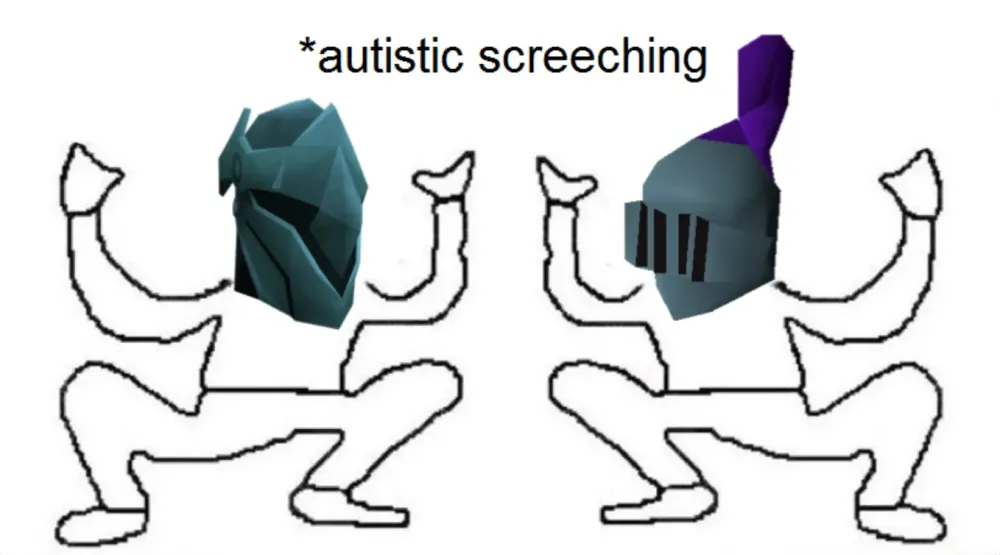Your cart is empty
Understanding Player Counts in OSRS and RS3: A Comparative Analysis

Old School RuneScape (OSRS) and RuneScape 3 (RS3) are two distinct versions of the iconic MMORPG developed by Jagex. OSRS, released in 2013, is a nostalgic take on the game as it was in 2007, appealing to players who prefer its simpler mechanics and community-driven updates. In contrast, RS3, launched in 2013 as well, incorporates modern graphics, updated gameplay features, and a more extensive storyline. Both versions boast dedicated communities, but understanding their player counts is crucial for grasping their popularity and longevity in the competitive gaming landscape.
Several factors influence player counts in both OSRS and RS3, including game updates, community engagement, and marketing efforts. Regular updates, such as new quests, skills, or events, play a vital role in maintaining player interest. OSRS often releases content that resonates with its community’s nostalgia, while RS3 focuses on modern gameplay enhancements and graphics. The frequency and quality of these updates can lead to spikes or declines in player numbers.
Community engagement is another significant factor. Both games have active forums, social media presence, and streaming content on platforms like Twitch and YouTube. When players see engaging content, whether it be a new boss release in OSRS or a high-level raid in RS3, it can motivate them to return or increase their playtime. Events like seasonal competitions, community challenges, or in-game festivals also draw players back, fostering a sense of belonging and camaraderie.
Marketing strategies and collaborations with influencers can significantly impact player counts as well. A well-timed promotional campaign or partnership with popular streamers can drive new players to both versions of the game. Additionally, seasonal promotions, such as holiday events or anniversary celebrations, can create a buzz and attract both returning and new players.
Player accessibility also affects counts. For instance, the introduction of mobile versions of OSRS has made the game more accessible, contributing to a rise in player numbers. RS3, while having a mobile version, may not attract as many players due to its complex mechanics and learning curve. Overall, the interplay of these factors creates a dynamic environment where player counts can fluctuate widely, reflecting the ongoing evolution of both games.
Historical Player Count Trends

Understanding the historical player count trends in Old School RuneScape (OSRS) and RuneScape 3 (RS3) gives us valuable insight into how both games have evolved over time. Both versions of RuneScape have seen significant fluctuations in player counts since their respective launches, influenced by various factors such as game updates, content releases, and community engagement.
For OSRS, launched in 2013, player numbers surged due to nostalgia and the return of classic gameplay. The following years saw peaks during major updates like the release of new quests, skills, or significant events such as the “Old School RuneScape Mobile” launch in 2018. Players flocked back to experience the game on their mobile devices, leading to record high player counts.
On the other hand, RS3, launched in 2013 as well, initially had a strong start but experienced a decline over the years. This decline was partly attributed to mixed reactions to updates that shifted the game’s focus. For example, the introduction of “EOC” (Evolution of Combat) in 2012 faced considerable backlash from long-time players, causing a dip in the player base.
Here’s a quick summary of key historical trends:
- OSRS: Significant player spikes during nostalgic updates and mobile launch.
- RS3: Fluctuations tied to major content changes and community feedback.
Overall, both games have had their highs and lows, shaped by player sentiment and the evolving landscape of gaming. Understanding these trends helps us appreciate the community dynamics and the ongoing legacy of RuneScape.
Current Player Count Statistics
As of 2023, the player count statistics for OSRS and RS3 paint a fascinating picture of the current state of both games. Player engagement and activity levels serve as crucial indicators of each game’s health and popularity.
Currently, OSRS boasts a robust player base, often peaking at around 100,000 concurrent players during peak hours. This number reflects the game’s strong community and successful updates, including seasonal events and new content releases that keep players engaged.
RS3, while having a smaller player base compared to OSRS, still maintains a solid following, with around 25,000 to 35,000 concurrent players during peak times. The game’s unique features, such as the updated graphics and diverse content, continue to attract both new and returning players.
Here’s a quick comparison of the current player statistics:
| Game | Peak Concurrent Players | Average Daily Players |
|---|---|---|
| OSRS | 100,000+ | 300,000+ |
| RS3 | 35,000 | 100,000+ |
This current landscape indicates that while OSRS retains a larger player base, both games have unique offerings that cater to different segments of the RuneScape community. As players continue to engage with both games, the statistics could shift, making it essential to keep an eye on future developments.
Community Impact on Player Engagement
The community plays a crucial role in the engagement levels of players in both Old School RuneScape (OSRS) and RuneScape 3 (RS3). The way players interact, share experiences, and collaborate can significantly influence how many people choose to log on and participate in the game. Here’s how community dynamics shape player engagement:
- Social Connections: Players often form friendships and bonds that keep them returning to the game. Whether through clans, in-game events, or social media, these connections make the game feel more alive and engaging.
- Content Creation: Streamers, YouTubers, and bloggers contribute significantly to the community’s vibrancy. Their content can spark interest, introduce new players, and keep existing players engaged. For instance, watching a live-streamed boss fight can motivate players to join in on the action themselves.
- Player-Driven Events: Events organized by players, such as tournaments or in-game competitions, foster excitement and encourage players to participate actively. These events create a sense of community and competition that can elevate player engagement.
- Feedback Loop: Both OSRS and RS3 developers often engage with their communities to gather feedback, ensuring that updates and changes resonate with player desires. This two-way communication keeps the community invested in the game’s evolution.
In summary, the community’s impact on player engagement in OSRS and RS3 cannot be overstated. When players feel connected and valued, they are more likely to stay active and involved in the game.
Future Projections for OSRS and RS3
As we look ahead, the future of Old School RuneScape (OSRS) and RuneScape 3 (RS3) appears promising, though distinct. Each game’s direction will likely cater to its unique audience while adapting to emerging trends in gaming. Here’s a breakdown of potential future projections for both:
| Aspect | OSRS | RS3 |
|---|---|---|
| Player Base Growth | Expected to continue growing, particularly with nostalgic players returning. | Stable growth through new content and engagement with existing players. |
| Content Updates | Focus on community-driven updates and classic gameplay mechanics. | Incorporation of modern features and regular updates to enhance the game experience. |
| Technological Advancements | Minimal changes; focus on maintaining the classic feel. | Integration of advanced graphics and gameplay mechanics to attract new players. |
| Community Engagement | Continued emphasis on player feedback for updates and events. | Enhanced interaction through social media and player-driven initiatives. |
In conclusion, both OSRS and RS3 have unique paths ahead of them. While OSRS leans into nostalgia and community involvement, RS3 may focus more on technological advancements and modern gameplay. Understanding these trajectories can provide valuable insights for players and investors alike.
Understanding Player Counts in OSRS and RS3: A Comparative Analysis
Player counts are a crucial metric for understanding the health and popularity of online games, particularly in the realm of MMORPGs like Old School RuneScape (OSRS) and RuneScape 3 (RS3). Both games, while sharing the same universe, cater to different player bases and offer distinct gameplay experiences.
OSRS has maintained a loyal following since its release in 2013, driven by nostalgia and a commitment to a simpler, more classic gaming experience. In contrast, RS3 features more modern graphics, extensive updates, and a more complex gameplay system, appealing to players who enjoy new content and innovations.
Key factors influencing player counts include:
- Game Updates: Frequent updates and content releases can attract returning players and keep the community engaged.
- Community Events: Events such as in-game promotions or seasonal activities draw players back to the game.
- Player Engagement: The level of interaction among players, including clans and social features, can enhance the gaming experience.
| Metric | OSRS | RS3 |
|---|---|---|
| Current Player Count (as of October 2023) | 95,000 | 50,000 |
| Average Monthly Players | 250,000 | 150,000 |
| Player Retention Rate | 70% | 50% |
Both games offer unique experiences that cater to different tastes within the gaming community. Understanding player counts in OSRS and RS3 provides insights into their respective health and longevity.
Conclusion: The State of the Game
Overall, OSRS continues to thrive with a robust player base, while RS3 remains a viable option for those seeking modern gameplay, showcasing the enduring appeal of the RuneScape franchise.

